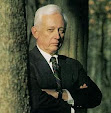"Nothing useful can be said about the security of a mechanism except in the context of a specific application and environment."
What is "NFC?"
In that context, what can one say about the security of Apple Pay?
We can say with confidence that Apple Pay is more secure than the alternative widely used payment mechanisms such as cash, mag-stripe cards, or comntactless (RFID) (debit or credit) cards. Its security is comparable to that of EMV ("Chip" cards).
What is necessary to use Apple Pay?
One must have one or more credit card or other bank accounts to charge. (By default, Apple Pay will use the account registered with the Apple Store. ). One must have use of an iPhone 6 or iPhone 6 Plus and Touch ID. Finally, the merchant must have point of sale devices that have contactless readers. These readers work with both contactless (RFID) credit cards and mobile computers using Near Field Communication (NFC).
If one loses one's iPhone can a finder use Apple Pay.
No. Both possession of the IPhone and the right fingerprint are necessary to use Apple Pay. Similarly someone with merely a copy of your fingerprint cannot use it. Of course, one would still want to remotely disable the iPhone.
If my password is disclosed, I can change it, but I cannot change my fingerprint.
True but there is no need. Passwords work only because they are secret. Fingerprints work because they are difficult to counterfeit; no need for secrecy. In fact one leaves copies of one's fingerprints all around in the normal course of things.
One can do Apple Pay with Apple Watch. Does it have a fingerprint reader?
No. The Apple Watch uses a different but equally effective authentication scheme. After one puts the Watch on, one enters a 4 digit personal identification number (PIN). This lasts until the sensors on the watch indicate that the watch has been taken off. Both of these authentication schemes are examples of Two-factor Authentication, iPhone and Touch ID, Watch and PIN. When used with the Secure Module and the one-time digital token to resist replay, Apple Pay has Strong Authentication..
One can do Apple Pay with Apple Watch. Does it have a fingerprint reader?
No. The Apple Watch uses a different but equally effective authentication scheme. After one puts the Watch on, one enters a 4 digit personal identification number (PIN). This lasts until the sensors on the watch indicate that the watch has been taken off. Both of these authentication schemes are examples of Two-factor Authentication, iPhone and Touch ID, Watch and PIN. When used with the Secure Module and the one-time digital token to resist replay, Apple Pay has Strong Authentication..
What is "NFC?"
NFC is a low power, low speed, extremely short range digital radio capability. Its applications include retail payments. Apple Pay uses NFC to communicate with the register or point-of-sale device. While NFC is only one alternative communication method, payment systems that use it may be identified as "NFC" systems.
Is NFC secure?
NFC makes no security claims. All required security must be built into the application. While it is low power and short range, NFC includes no other security properties, functions or features. Apple Pay does not rely upon NFC for security. The token value that Apple Pay uses NFC to send to the point of sale is a one-time value. Unlike a credit card number, it is not vulnerable to disclosure or reuse.
How do I know how much I am being charged?
As with credit card transactions, the amount that you will be charged is displayed on the register. As with credit card transactions, you may be asked to "accept" or confirm pthe amount to the register. As with credit card transactions, the register will provide you with a paper receipt.
How do I know that the amount that appears on the register, that I confirm, and that is printed on the receipt is what is actually charged to my account?
By benign design and intent, systems will automatically ensure that the displayed amount and the charged amount are the same. One can imagine a system designed to cheat but these will be very rare, easily detected, and quickly shut down. To some degree, this will depend on you.
As with credit cards and checks, some of you must reconcile charges (perhaps using the paper receipt) to your account to what you authorized. (Some other "wallet" programs immediately confirm the location and amount to the mobile device by SMS. It remains to be seen whether Apple Pay will do this but it is likely.) (Your bank or account holder may also offer transaction confirmation features. For example, American Express offers its customers the option to have "card not present" transactions confirmed in real time by e-mail. Incidentally, Apple Pay transactions look to American Express as "card not present.")
As with credit cards and checks, some of you must reconcile charges (perhaps using the paper receipt) to your account to what you authorized. (Some other "wallet" programs immediately confirm the location and amount to the mobile device by SMS. It remains to be seen whether Apple Pay will do this but it is likely.) (Your bank or account holder may also offer transaction confirmation features. For example, American Express offers its customers the option to have "card not present" transactions confirmed in real time by e-mail. Incidentally, Apple Pay transactions look to American Express as "card not present.")
What if the charges to my account are not the same as I authorized?
Errors or fraud will be rare but you will continue to enjoy the same right to dispute charges that you have always had.
Lest you think that these questions are trivial, I heard each of them raised seriously by serious people on TV this week.




